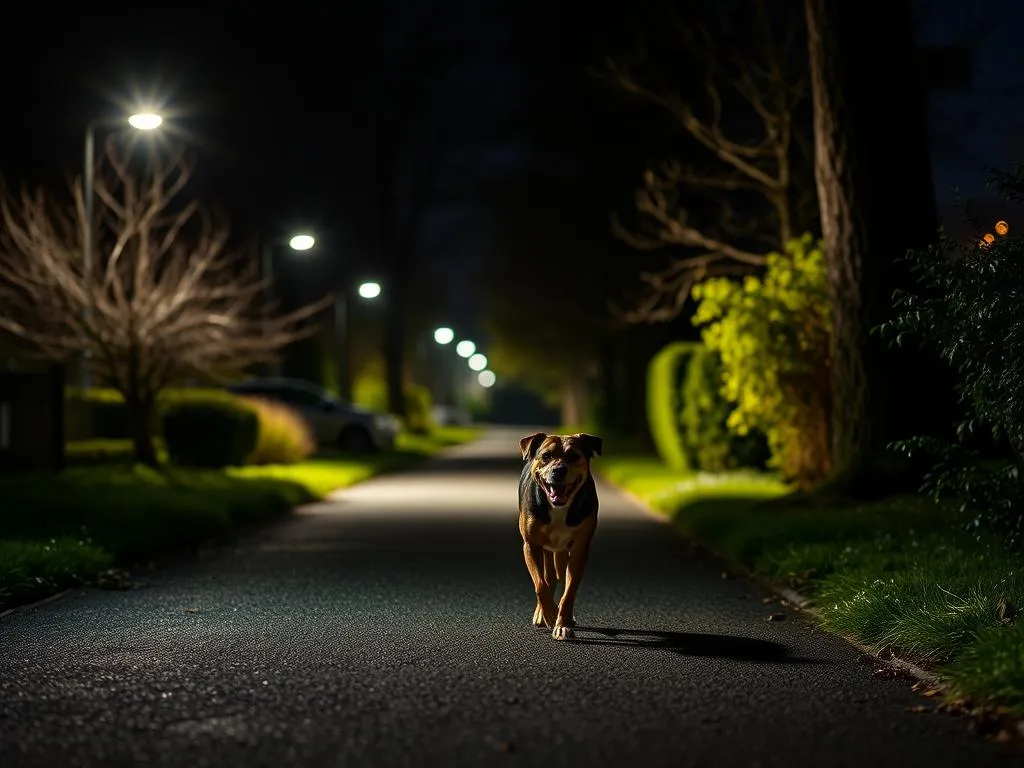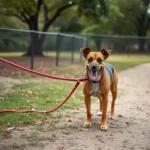
Walking your dog at night can be a rewarding experience, but it also comes with its own unique set of challenges. As the sun sets and darkness envelops the world, visibility decreases, and potential hazards increase. However, with the right preparation and knowledge, you can make night walks safe and enjoyable for both you and your furry companion. This article will guide you through the essential aspects of how to safely walk your dog in the dark, from understanding risks to preparing effectively and practicing safe walking techniques.
Understanding the Risks
Decreased Visibility
When walking in the dark, visibility is significantly reduced, making it harder for you to see potential dangers and for others to see you and your dog. According to safety statistics, pedestrian accidents tend to be more common during nighttime hours, with a substantial percentage involving pets as well. With reduced visibility, it’s crucial to take extra precautions to ensure both you and your dog remain safe.
Increased Distracted Driving
Low-light conditions can lead to increased distracted driving. Drivers may struggle to see pedestrians and pets, especially in poorly lit areas. As a precaution, choose walking routes that are well-lit and avoid busy roads whenever possible. Planning your route can minimize the risk of encountering distracted or unaware drivers.
Wildlife Encounters
Nighttime is often when wildlife becomes more active. Depending on where you live, you may encounter raccoons, skunks, or even larger animals like deer. It’s essential to recognize signs of wildlife presence, such as tracks or droppings, and to be vigilant while walking. Keeping your dog on a leash can help prevent unexpected encounters with wildlife.
Preparing for Night Walks
Essential Gear for You
Before stepping out for a night walk, equip yourself with essential gear. A good flashlight is critical for illuminating your path and spotting potential hazards. Reflective gear can also make you more visible to others, so consider wearing a reflective vest or jacket. Bright or light-colored clothing can further enhance your visibility in the dark.
Essential Gear for Your Dog
Your dog’s safety is just as important. Invest in a reflective collar and leash, which will help make your dog visible to oncoming traffic and passersby. LED collars or harnesses are also great options, providing extra visibility. Additionally, make sure your dog has an ID tag with up-to-date information in case they get lost.
Choosing the Right Time
Timing is everything when it comes to walking your dog at night. The best times for evening walks are usually shortly after sunset or before the early morning hours. Pay attention to local weather conditions as well; rainy or foggy nights can further reduce visibility, making walks more dangerous.
Safe Walking Practices
Planning the Route
When planning your night walk, select well-lit paths and familiar areas. Avoid secluded spots or poorly lit streets, as these can be risky. Stick to neighborhoods with streetlights, sidewalks, and a higher likelihood of other pedestrians being present. Familiarity with your route can also enhance your sense of security.
Maintaining Control of Your Dog
It’s crucial to maintain control of your dog during night walks. Choose the right leash type—consider using a shorter leash for better control, especially in crowded or dimly lit areas. Training your dog to walk calmly beside you and respond to commands is essential for managing their behavior at night.
Staying Alert
Staying alert is vital when walking in the dark. Pay attention to your surroundings, and avoid distractions like looking at your phone. Being aware of your environment helps you identify potential dangers before they become a problem. Encourage your dog to stay focused on you and the walk, as this will help both of you remain safe.
Training Your Dog for Night Walks
Basic Obedience Training
Before taking your dog out for night walks, it’s essential to establish a solid foundation of obedience training. Teaching commands like “Sit,” “Stay,” and “Come” can be lifesavers during unexpected situations. Reinforcement techniques, such as positive reinforcement with treats or praise, can help your dog learn these commands effectively.
Night-Specific Training
Night-specific training is equally important. Practice recall and focus exercises in low-light situations to help your dog respond well even when visibility is poor. You can also desensitize your dog to noises and movements at night. Gradually exposing them to these stimuli during training can help reduce anxiety and keep them calm during walks.
Emergency Preparedness
Carrying a Safety Kit
Being prepared for emergencies is crucial. Carry a safety kit that includes items like a first aid kit, a whistle, and a flashlight. Having your phone charged and ready for use can also be a lifesaver in case of emergencies. Familiarize yourself with the contents of your kit so you can access items quickly if needed.
Knowing What to Do in Emergencies
In an emergency, knowing how to react is vital. If you encounter a problem, such as a stray dog or wildlife, stay calm and try to keep your dog close to you. If your dog becomes injured, assess the situation and use your first aid supplies as necessary. Keep a list of emergency vet contacts and local animal services in your phone or safety kit for quick access.
Alternatives to Night Walks
Indoor Exercise Options
If you find that night walks are too risky or stressful, consider indoor exercise options. Activities like playing fetch in a hallway or using dog toys and puzzles can keep your dog active and engaged. Indoor obstacle courses can also provide physical and mental stimulation without the risks associated with nighttime walks.
Daytime Walks
Adjusting your schedule to incorporate daytime walks can be a safe alternative. Daytime walks provide ample visibility and reduce the risks associated with low-light conditions. Look for opportunities to walk your dog during lunch breaks or early morning hours to ensure they get the exercise they need.
Conclusion
Walking your dog in the dark doesn’t have to be a daunting task. By understanding the risks, preparing adequately, and practicing safe walking techniques, you can ensure enjoyable and safe night walks. Prioritize safety for yourself and your dog, and embrace the tranquility that comes with walking at night. Every dog owner has unique experiences, so feel free to share your tips or stories about night walks with your furry friend.









